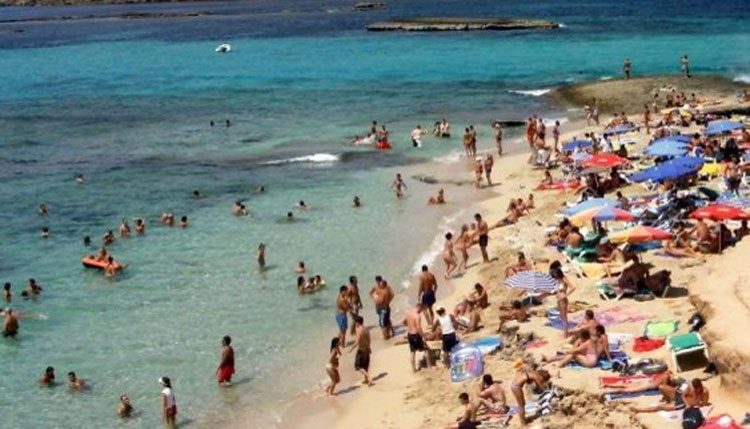The Diplomat
Spain was visited by nearly 9.1 million international tourists in July, an amount that represents 92% of arrivals for the same month in 2019.
According to data from the Frontur and Egatur surveys published yesterday by the National Statistics Institute (INE), international tourists spent a total of 11,869 million euros in July, a figure that practically equals July 2019 spending (-0.6%).
In July, average spending per tourist increased by €100 compared to the same month in 2019, from €1,209 to €1,309. The average stay also grew from 7.5 to 7.7 days. On a cumulative basis for the year, arrivals exceeded 39 million in July and spending reached 47,637 million euros.
“These are extraordinary figures that confirm our forecasts that in 2022 we will experience a summer like those of the past, despite the challenge posed by the current context of inflation,” said the Minister of Industry, Trade and Tourism, Reyes Maroto. “In addition to the recovery of our main European markets, there was also growth in arrivals from the United States, a market that is also approaching pre-pandemic figures,” she added.
The United Kingdom was the main outbound market, with 1.9 million tourists (88% of those who came in July 2019). It was followed by France, with more than 1.4 million (98% compared to 2019), and Germany, with nearly 1.1 million, 88% of those who came pre-pandemic. In addition, several markets sent more travelers to Spain than in the pre-pandemic stage, such as the Netherlands, with 556,650 (+9.5%); Belgium, 418,309 (+8.6%); or Portugal, with 301,749 (+17.6%). Among distant markets, the good performance of the USA stands out, which issued 361,498 tourists, equivalent to 85% of arrivals in July 2019.
The Balearic Islands was the main destination chosen by international tourists in July. One out of every four tourists who came to Spain went to this archipelago, which received almost 2.3 million tourists, mainly British and German. The Balearic Islands practically reached pre-pandemic numbers, with a 97% recovery compared to July 2019.
It is followed by Catalonia, with nearly two million, representing 83% of arrivals in the same month of 2019. Catalonia is mainly chosen by French and other European countries. In third place, the Comunitat Valenciana received 1.1 million international tourists, mainly British and French, accounting for 90.5% of those arriving in 2019. In the accumulated of the year, the communities that received more tourists are Catalonia, with almost eight million; Balearic Islands, with almost 7.5 million and Canary Islands, with almost 6.8 million.






